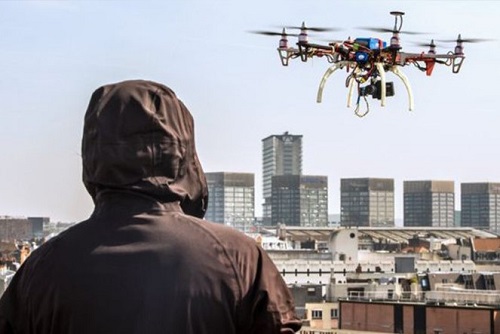AFP photo
By
Ricardo Swire
The misuse of drones or Unmanned Aerial Vehicles (UAVs) is not restricted to direct attacks, a range of terrorist, insurgent, criminal, corporate and activist threat groups have already demonstrated the ability to use civilian drones for attacks and counter-intelligence gathering. Drones are very effective surveillance platforms used to secretly monitor facilities, residences or movements of potential human targets. The ‘DJI Phantom 4’ carries a personalized payload of slightly more than one pound. Heavy lift drones transport more than twenty pounds.
Corporate security and executive protection teams now have another safety consideration, along with watching for traditional surveillance processes such as human operatives and static cameras. 2011 US Department of Homeland Security (DHS) statistics recorded five semi-submersibles intercepted while shuttling cocaine across the Caribbean Sea that fiscal year. The 2012 US Government Accountability Office (GAO) report documented official drones cost federal agencies US$3,234 per hour. Intelligence data gathered from such drones equalled just a fraction of the total drug traffickers and undocumented migrants arrested.
In 2012 America’s Department of Homeland Security expanded its use of drones to observe Caribbean and Gulf of Mexico drug trafficking passages. One DHS drone known as “Guardian” carries infrared sensors which enables night flights. Prototypes were tested for eighteen months in skies over the Bahamas island chain. Guardian has twice the “loiter time” of the customary US Navy Lockheed P-3 Orion four engine turboprop anti-submarine and maritime surveillance plane.
Organized criminal syndicates equipped with military grade drones are more prevalent. National security breaches in Mexico by drug cartels and in Italy spotlighted the nature of threats commercial drones can have in nefarious hands. On July 3, 2018 Greenpeace activists executing “Direct Action” crashed a drone, draped in a Superman costume, on the spent fuel rod storage building wall of a nuclear power facility in Bugey, France. The Greenpeace aggressors initially launched two drones but police were able to intercept one.
On July 10, 2018 a commercial drone, armed with two South Korean fragmentation grenades, crashed outside the Secretary of Public Security of Baja California state in Mexico. Intelligence data verified this drug cartel initiated security breach involved a second sinister drone that did not carry triggering mechanism for grenades. The drone is now a choice weapon among new-age Mexican cartel assassins, especially the large six-rotor “heavy lift” model originally used to traffic cocaine over the US/Mexico border.
Ricardo Swire
Ricardo Swire is the Principal Consultant at R-L-H Security Consultants & Business Support Services and writes on a number of important issues.



No Comments Yet!
You can be first to comment this post!